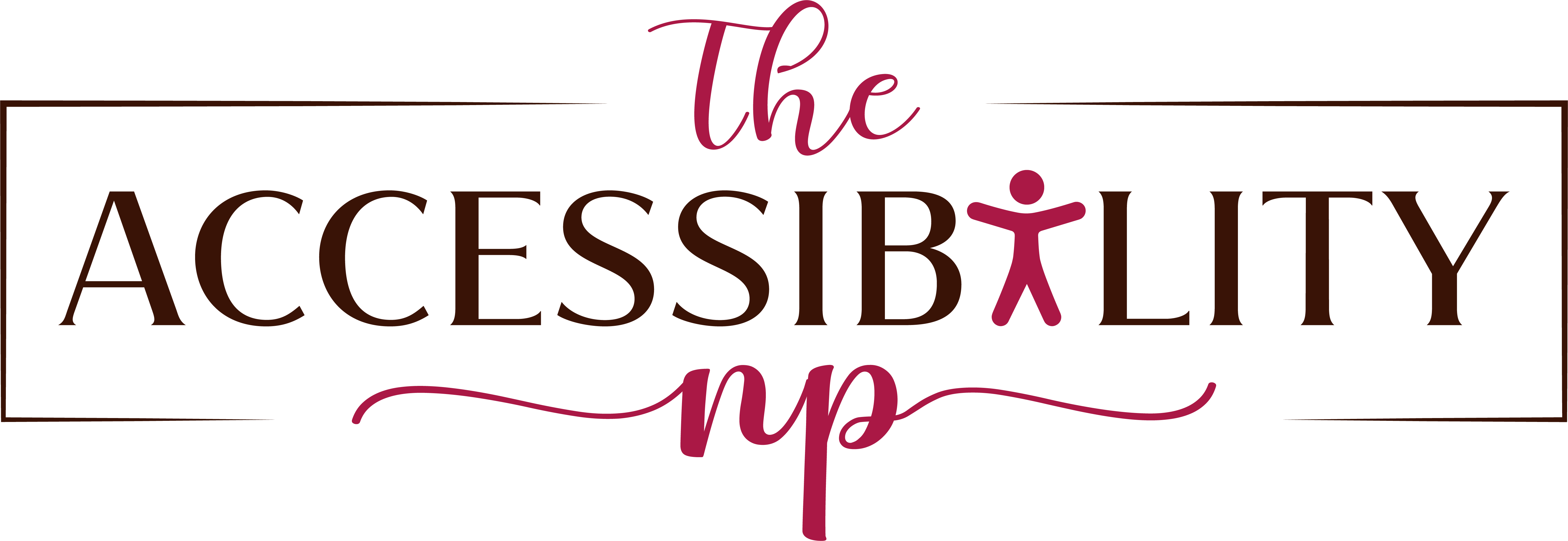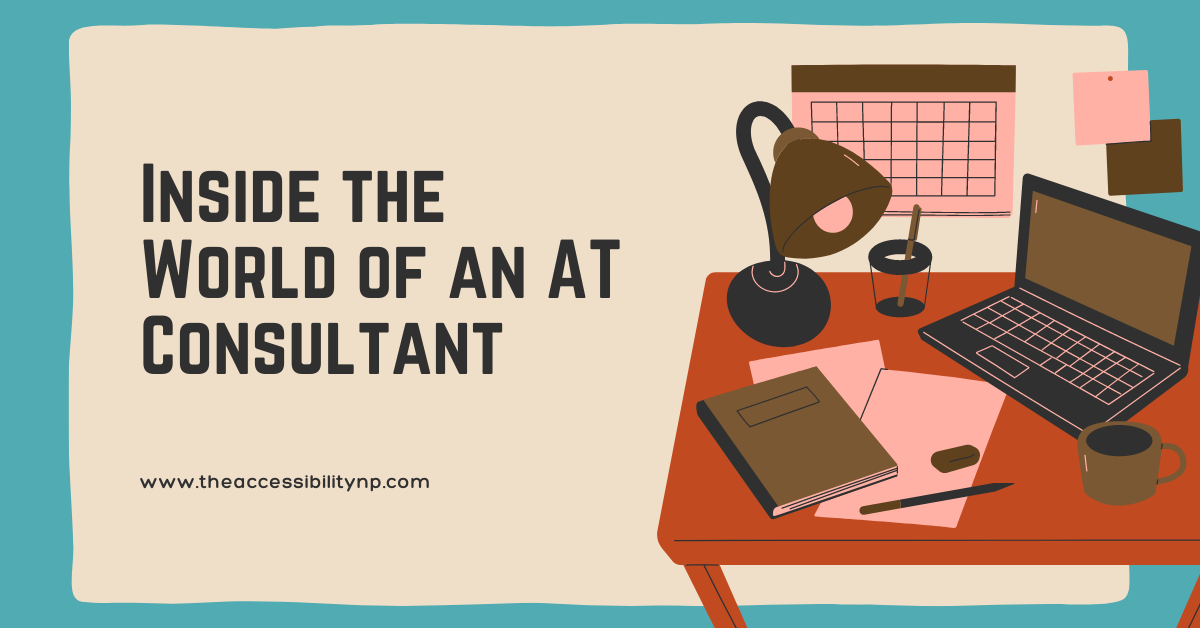When we talk about accessibility, it’s more than just ramps and parking spaces—it’s about ensuring everyone can interact with the world in ways that work best for them. Assistive Technology (AT) plays a huge part in this, helping disabled individuals have the tools they need to navigate their environments successfully. Whether it’s at school, work, or home, the right technology can make all the difference.
As an Assistive Technology Consultant, my role is to help identify and implement the tools that make life easier and more accessible. But it’s not just about the technology—it’s about understanding the person and their unique needs. In this blog, I’d love to walk you through what I do day-to-day, why it matters, and how it could help you or someone you know.
What Exactly is Assistive Technology?
Assistive Technology is a broad term that covers any device, equipment, or software that helps someone accomplish a task they might otherwise find difficult or impossible. It could be something as simple as a pencil grip to help someone with fine motor challenges write, or it could be a more advanced tool, like speech-to-text software for students with dyslexia.
What’s important to know is that there’s no “one size fits all” when it comes to AT. Every person is different, and so are their needs. That’s where I come in—to help figure out the best solution for each individual situation.
My Role as an Assistive Technology Consultant
As an AT consultant, I work closely with individuals, families, schools, workplaces, and community organizations to make sure that everyone has the tools they need to thrive. This role includes evaluating needs, recommending the right tools, providing training, and continuing to offer support long after the initial setup.
A big part of my work is building connections with the people I support. It’s important to understand their challenges and goals to find a solution that fits into their everyday lives. The tools are important, but understanding the person behind the technology is what makes the difference.
Here’s a peek into what my day usually looks like (though, to be honest, no two days are ever the same!).
A Day in the Life of an Assistive Technology Consultant
One of the things I love about being an AT consultant is the variety. Each day brings new challenges and opportunities to make a difference. Here’s a typical day for me—though, as I said, things can change quickly!
Morning: Assessments and Getting to Know You
I often start my day with an evaluation or assessment, which is really just a way of getting to know the person I’ll be helping. Whether I’m working with a student in a school, an employee in a workplace, or an individual at home, I focus on understanding their strengths, challenges, and goals.
For example, if I’m working with a dyslexic student who struggles with reading and writing, I might explore speech-to-text software that allows them to get their ideas down without the frustration of typing or handwriting. If I’m helping someone in an office, I might look at how their workspace is set up and suggest ergonomic tools that can make their day more comfortable.
This part of the process is all about connection. I ask a lot of questions and try to understand the little details that will help me recommend tools that truly make a difference. I want the people I work with to feel heard and supported every step of the way.
Midday: Teamwork Makes the Dream Work
Once I’ve completed an assessment, I spend a lot of my time working with others—teachers, parents, administrators, coworkers—anyone who is part of the individual’s support system. Collaboration is so important because the success of any AT solution depends on how well everyone works together.
In schools, I’ll often sit down with teachers and special education staff to make sure that the technology is integrated into the student’s daily routine. For the dyslexic student using speech-to-text software, we make sure they feel comfortable using it in the classroom and ensure that the teachers are also familiar with how to support them. At work, I might help supervisors or HR professionals understand how they can support an employee using assistive technology. Together, we make sure that everyone is on the same page and that the technology is set up for success.
Afternoon: Hands-On Training and Support
Once we’ve identified the right tools, it’s time to start using them! This is often the most hands-on part of my job. I work one-on-one with the individual to show them how the technology works and make sure they feel comfortable using it.
For a student using speech-to-text, I’ll spend time helping them understand how to navigate the software, dictate their thoughts, and edit their work. I also train teachers or parents, so they can offer support when needed. Training is never rushed; I take the time to ensure the individual and their support system feel confident with the new tools.
Late Afternoon: Checking In and Providing Ongoing Support
Even after the technology is up and running, my job isn’t over. I’m always available for follow-up support and troubleshooting. Sometimes things don’t work as expected, or a person’s needs might change over time, so I’m here to help make adjustments or find new solutions.
I spend a good part of my day answering emails, making phone calls, and checking in with clients to make sure everything is going smoothly. I love hearing how the technology is making a difference in their lives, and I’m always ready to help with any questions that come up.
Why is Assistive Technology Consulting So Important?
You might wonder, why not just buy the technology and figure it out yourself? The truth is, Assistive Technology is only effective if it’s the right fit for the person using it. And with so many different tools out there, it can be overwhelming to know where to start.
That’s where an AT consultant comes in. I take the guesswork out of the process by:
- Finding the Right Fit: Not every tool works for everyone. My job is to help find the perfect match for each person’s unique needs.
- Training and Support: Technology is only useful if you know how to use it! I make sure that the person and their support team feel confident and comfortable with the new tools.
- Ongoing Adjustments: As people grow and their needs change, their technology might need to change, too. I’m here to offer ongoing support and make adjustments as needed.
Ultimately, my goal is to create inclusive environments where everyone can participate fully—whether that’s in school, at work, or at home.
The Challenges and Rewards of AT Consulting
Of course, no job is without its challenges. One of the biggest is keeping up with the rapid pace of technological advancements. New devices, apps, and software are coming out all the time, and it’s important for me to stay up-to-date so I can provide the best recommendations.
Another challenge is funding. While some devices might be covered by insurance or school funding, others are not, and it can be tough for families or organizations to afford everything they need. Part of my job is to help navigate these challenges and find creative solutions.
But the rewards far outweigh the challenges. There’s nothing quite like seeing someone light up when they realize they can do something they never thought possible—whether it’s communicating effectively through speech-to-text software or feeling more comfortable in a workspace. That’s why I love what I do!
How You Can Get Started
If you think Assistive Technology Consulting could benefit you or someone you support, I’m here to help! Whether you’re a parent looking for ways to support your child in school, a teacher trying to make your classroom more accessible, or an employer wanting to create an inclusive workplace, I’d love to chat.
The first step is simple: let’s connect! We’ll start by discussing your needs and goals, and I’ll help guide you through the process from start to finish. Together, we can find the right tools that make life easier and more accessible.
Final Reflections
Being an Assistive Technology Consultant is more than just a job—it’s a way to help people unlock their potential and live fuller, more independent lives. Whether I’m working in a school, at a workplace, or with individuals at home, the goal is always the same: to ensure that everyone has the tools and support they need to succeed.
If you’re ready to explore how Assistive Technology can make a difference, I’m here to help. Let’s work together to create a more accessible and inclusive world—one solution at a time.
Until next Monday, stay connected and keep advocating!

